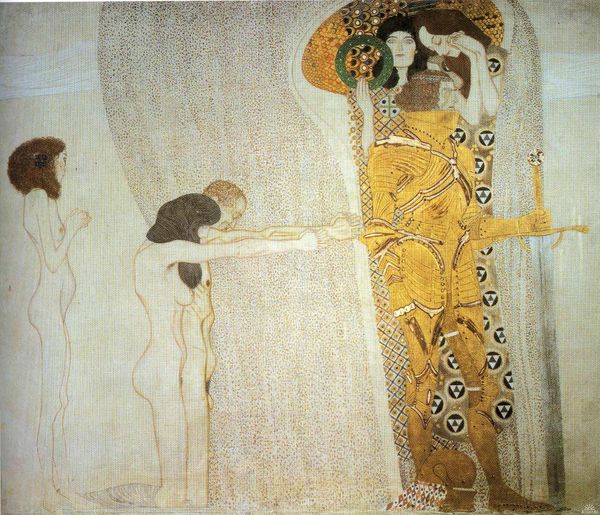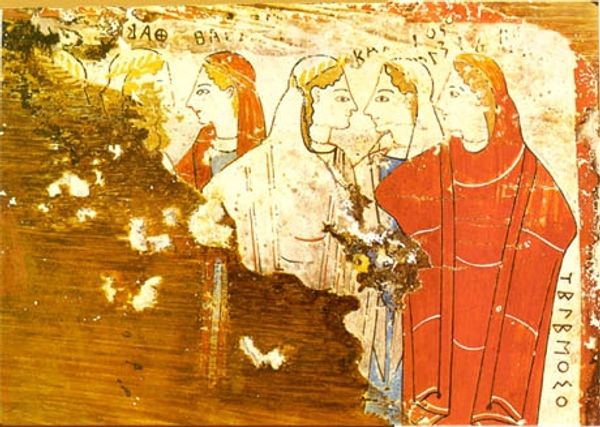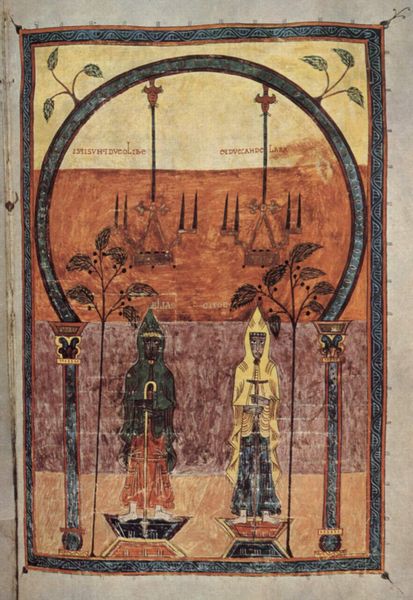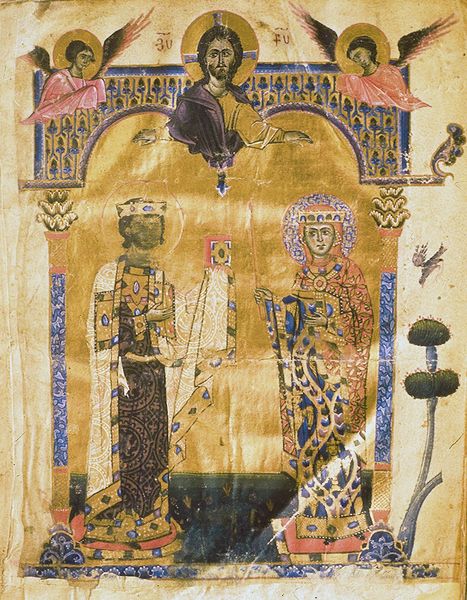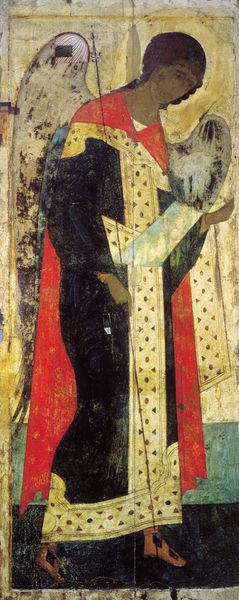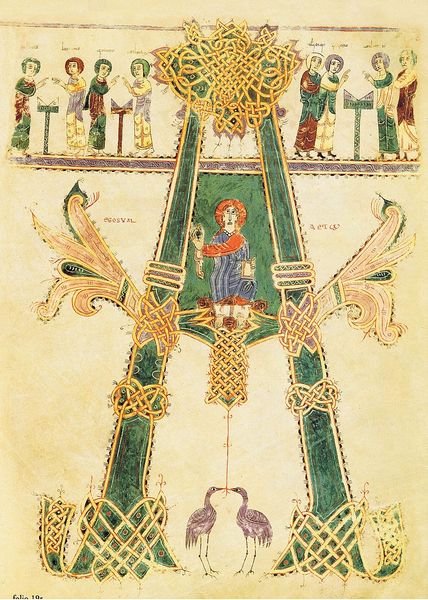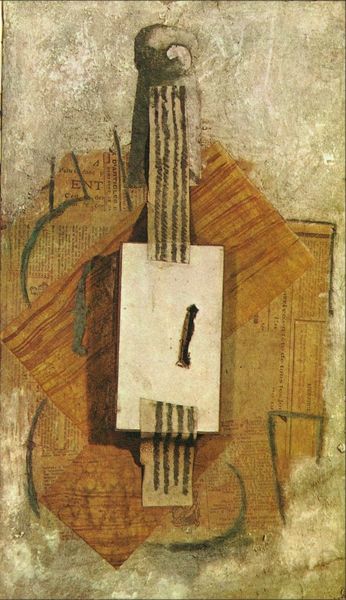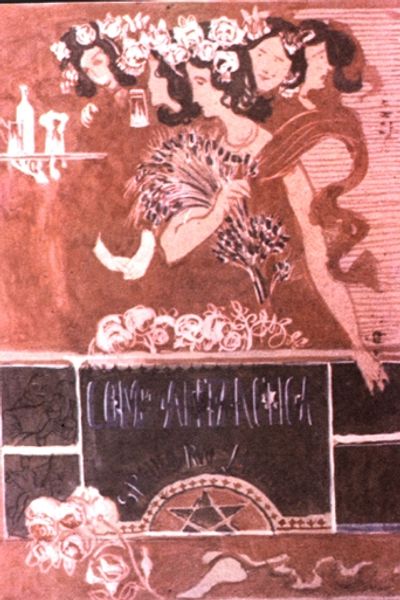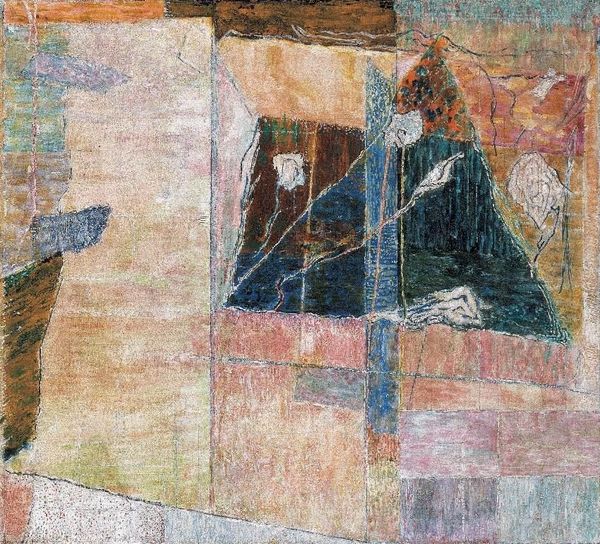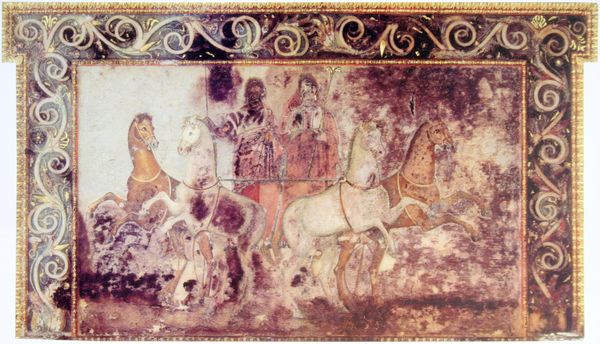
The Beethoven Frieze: The Longing for Happiness Finds Repose in Poetry. Right wall 1902
0:00
0:00
textile
#
allegories
#
abstract painting
#
symbol
#
impressionist painting style
#
textile
#
possibly oil pastel
#
text
#
handmade artwork painting
#
oil painting
#
acrylic on canvas
#
underpainting
#
painting painterly
#
painting art
#
watercolor
Copyright: Public domain
Curator: We’re looking at a segment of Gustav Klimt’s "Beethoven Frieze," specifically the right wall section titled "The Longing for Happiness Finds Repose in Poetry," completed in 1902. The work currently resides at the Belvedere in Vienna. It's a striking piece, created with oil paint and applications of gold leaf, a key element in Klimt’s aesthetic. Editor: It certainly radiates a powerful sense of… yearning. The elongated figures and swirling forms create a visually rich surface, yet also feel intensely private, almost voyeuristic. Curator: Consider the historical context. Klimt produced this as part of an exhibition celebrating Beethoven. It's an allegory, an interpretation of Beethoven's Ninth Symphony through a lens of societal longing and artistic resolution. The materials themselves, especially the gold leaf, evoke a sense of opulence intertwined with spiritual quest. Think about the socio-economic realities of Vienna at the turn of the century: the burgeoning industrial revolution juxtaposed with the dying embers of the Austro-Hungarian empire. Klimt taps into this tension. Editor: From a purely formal viewpoint, notice how the composition pulls us into the embrace of those central figures. The contrasting verticality and horizontality creates tension but resolved by those central bodies; it makes the act of ‘repose’ less conclusive. The gold serves less as a religious token, and more as an attempt to amplify its visual impact. Curator: Yes, but I disagree with your first assessment. Surely, by deploying costly materials like gold leaf, Klimt’s studio forces us to contemplate on who his audiences are and what purpose his works will fulfil. How will social hierarchy shape his reception? That question has to come before a focus on Klimt’s design choices. Editor: The beauty of it lies precisely in that interplay, wouldn't you agree? We cannot discuss the ‘artist’ in isolation to the structures that make their practice viable. The lines, colours, forms... Curator: The lines only become forms within particular social, political, and economic contexts. Only when Klimt's workshop production becomes part of your formal reading, would you have achieved true material engagement! Editor: A fair point, Curator, a fair point indeed. Still, despite our slightly different lenses, I think we can agree that the "Beethoven Frieze" provides ample material - pun intended - for aesthetic and critical contemplation. Curator: Absolutely, it remains a crucial piece to understanding artistic ambition, socio-economic anxiety and, crucially, material transformation in fin-de-siècle Vienna.
Comments
No comments
Be the first to comment and join the conversation on the ultimate creative platform.
